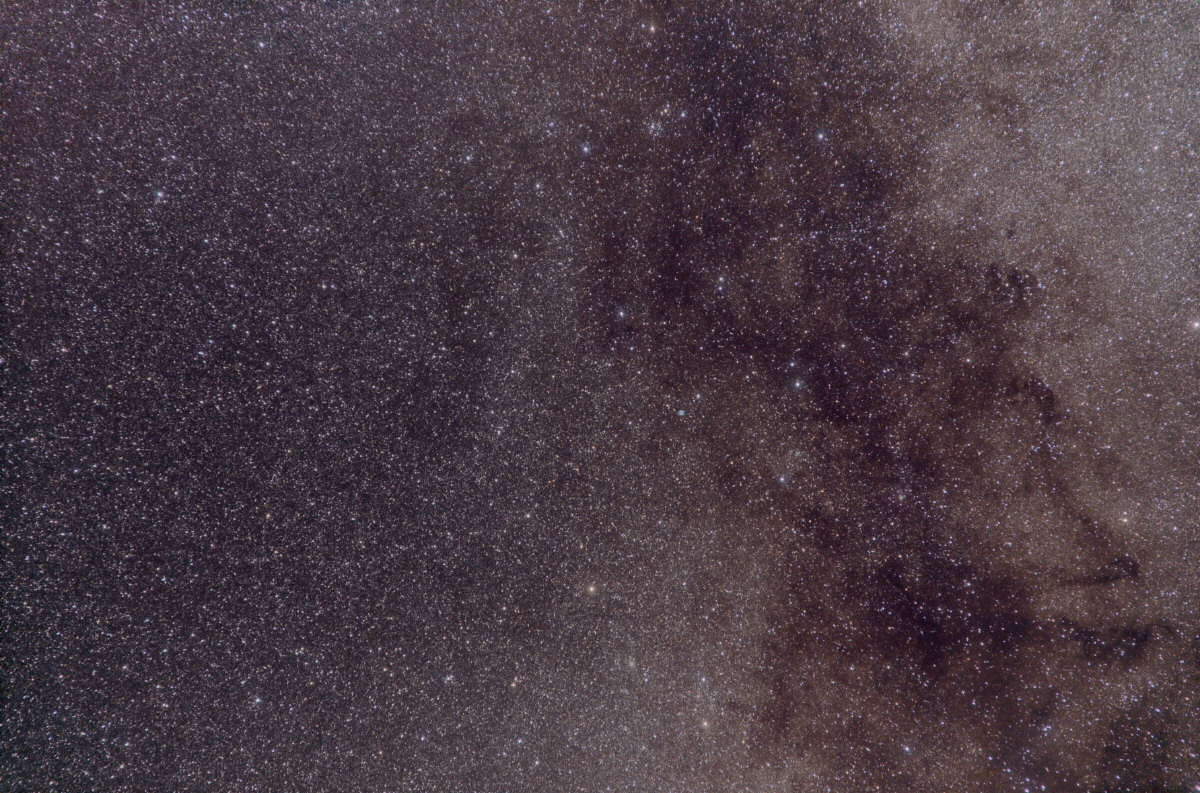
Move your mouse over the image above to get a version with constellation lines, deep-sky objects and labels drawn.
Vulpecula, the little fox, is an inconspicuous constellation between Cygnus and Sagitta. None of its stars is brighter than 4th magnitude. It is a "modern" constellation which was defined in the 17th century by the astronomer Johannes Hevelius. The brightest star in Vulpecula is Anser (α Vulpeculae), a red giant loctaed at a distance of 297 light years.
Sagitta, the arrow, is the third-smallest constellation in the sky. Four stars of the 3rd and 4th magnitude form an arrow, whereby the brightest one (γ Sagittae) symbolizes the point. Many antique cultures, like the Persians, the Hebrews, the Greeks and the Romans saw an arrow in this constellation, although it is not clear which mythological figure of the sky actually shot the arrow, and at whom.
Both constellations are located in a rich stretch of the Milky Way. They contain numerous galactic clusters and nebulae. The brighter deep-sky objects are marked in the image above. The most prominent object right at the image's center is M27, the Dumbbell Nebula, a large, bright planetary nebula which was discovered by the French astronomer Charles Messier in 1764 as the very first object of its kind. In Sagittta, mid-way between γ and δ, is another Messier object: M71, a very loose globular cluster which had been mistaken for quite some time for a dense open cluster.
Non-Messier objects are mostly open clusters. The largest and best-known of these is Collinder 399 (also called Brocchi's cluster), located near the lower right corner, whose distinctive star pattern reminds of a coat-hanger. It can already be seen with the naked eye. Other open clusters include NGC 6793, NGC 6800, NGC 6802, NGC 6813, NGC 6815, NGC 6823, NGC 6827, NCG 6830, NGC 6834, NGC 6842, NGC 6846, NGC 6882 and NGC 6885. NGC 6842, NGC 6886 and NGC 6905 are planetary nebulae. NGC 6820 is a faint emission nebula while NGC 6921 is actually a galaxy. Red emission nebulae are not visible in this image because of the mediocre Hα sensitivity of the unmodified camera.
For more information and detailed pictures of the more prominent individual objects follow the links given below:
 The Milky Way in Cygnus, zoom lens photograph.
The Milky Way in Cygnus, zoom lens photograph.
 Sh2-82 and Surrounding Area, telelens photograph.
Sh2-82 and Surrounding Area, telelens photograph.
 M27 - Dumbbell Nebula, Maksutov-Newtonian CCD-image.
M27 - Dumbbell Nebula, Maksutov-Newtonian CCD-image.
 LDN 778 in Vulpecula, Wright-Newtonian CCD-image
LDN 778 in Vulpecula, Wright-Newtonian CCD-image
Exposure Data